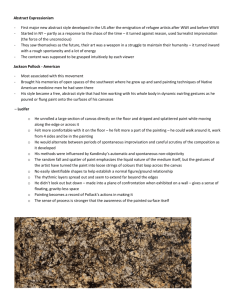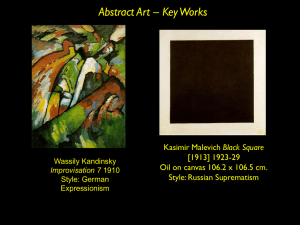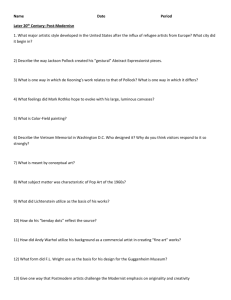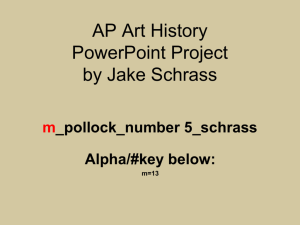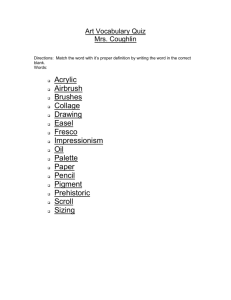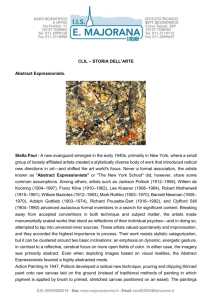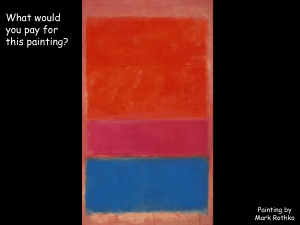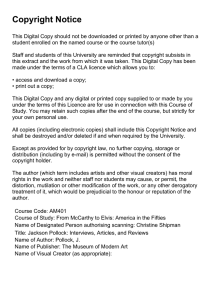Day 29: Abstract Expressionism
advertisement
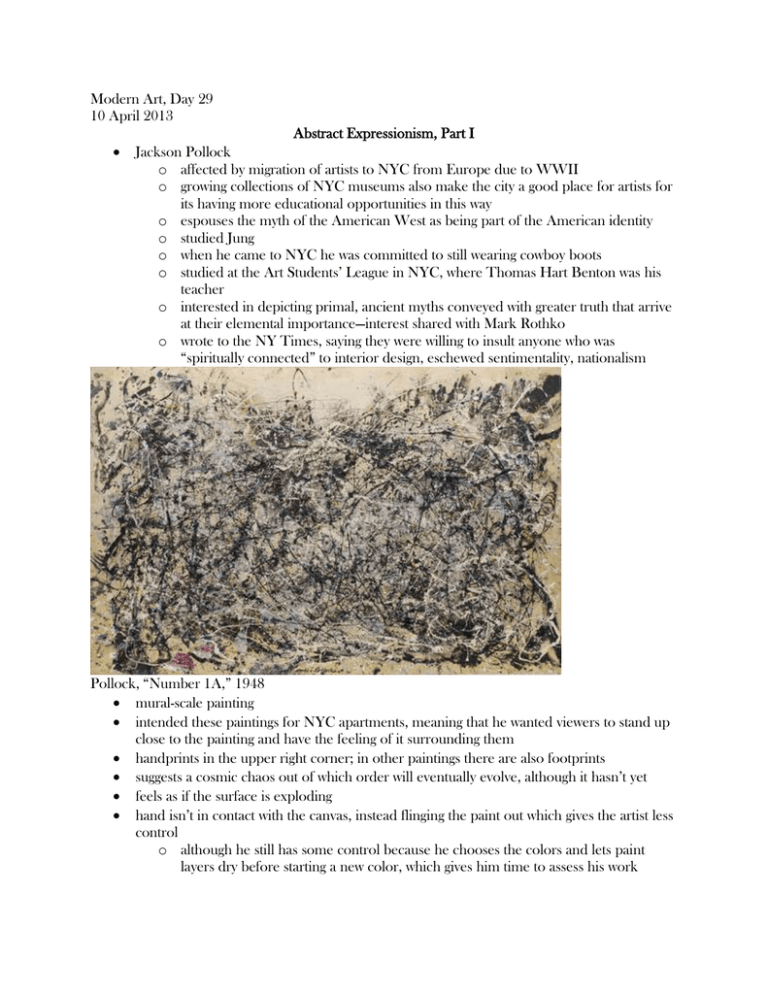
Modern Art, Day 29 10 April 2013 Abstract Expressionism, Part I Jackson Pollock o affected by migration of artists to NYC from Europe due to WWII o growing collections of NYC museums also make the city a good place for artists for its having more educational opportunities in this way o espouses the myth of the American West as being part of the American identity o studied Jung o when he came to NYC he was committed to still wearing cowboy boots o studied at the Art Students’ League in NYC, where Thomas Hart Benton was his teacher o interested in depicting primal, ancient myths conveyed with greater truth that arrive at their elemental importance—interest shared with Mark Rothko o wrote to the NY Times, saying they were willing to insult anyone who was “spiritually connected” to interior design, eschewed sentimentality, nationalism Pollock, “Number 1A,” 1948 mural-scale painting intended these paintings for NYC apartments, meaning that he wanted viewers to stand up close to the painting and have the feeling of it surrounding them handprints in the upper right corner; in other paintings there are also footprints suggests a cosmic chaos out of which order will eventually evolve, although it hasn’t yet feels as if the surface is exploding hand isn’t in contact with the canvas, instead flinging the paint out which gives the artist less control o although he still has some control because he chooses the colors and lets paint layers dry before starting a new color, which gives him time to assess his work o said “the painting has a life of its own…it’s only when I lose contact with the painting that it becomes a mess.” Things to consider in abstract painting: line, color, technique of applying paint, tactile properties of paint (paint is layered, so the paint that sticks up over the surface of the canvas creates real, actual space!) o there’s also the sense of space because of the overlapping of the different paint colors works on his canvas on the floor, and only decides after the painting is finished which side will be the top and bottom artist is defining himself through the act of painting important for the critics to insist on the importance of these artists to modern society because “they are the few who can act freely and make courageous existential decisions” De Kooning, “Woman I,” 1950-2 “Flesh is the only reason oil painting was invented” Abstract Expressionist artists were photographed in Life Magazine Clyfford Still to the right of Pollock (who’s in the center) Robert Motherwell next to Still o also made a series of paintings that dealt with the conflicts in Ireland Barnett Newman in the center just below Pollock Rothko in the right corner Motherwell, “Elegy to the Spanish Republic, No. 34,” 1953-4 suggested that black forms suggest genitalia of a bull after it’s been sacrificed Rothko, “Untitled (Violet, Black, Orange, Yellow on White and Red),” 1949 Rothko: has a romantic notion of the artist o wants to create an art that will be about communication and possibly the inability to communicate works on a subconscious level in our understanding of it imagined for apartment-sized spaces prompts you to ask questions but there’s not necessarily answers isn’t much sign of brushwork, preventing you from seeing the artist’s hand and developing a kind of rapport with the artist analogized with Caspar David Friedrich links in thinking behind Rothko’s work to Judaism (he was Jewish); Job asks God for answers but doesn’t necessarily get any suffered an aneurysm in 1970 which led to his committing suicide Rothko, “Rothko Chapel, Houston,” 1966-70 meant to be an interdenominational meditation chapel Black on Gray 1970
